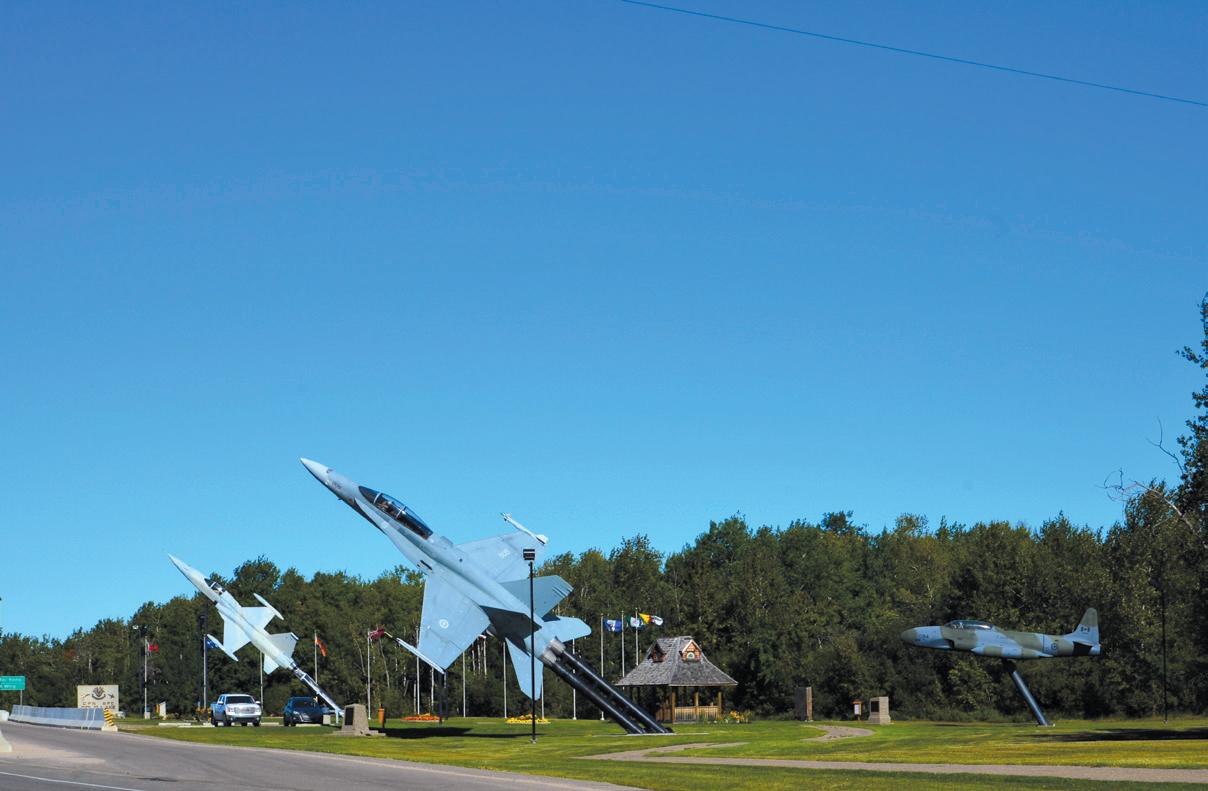
3 minute read
CFB/BFC Cold Lake
ABOUT COLD LAKE
Cold Lake is located at the eastern-most extreme in the province of Alberta. It is approximately 294 kilometres northeast of Edmonton.
Advertisement
Incorporated in 1996 through amalgamation of the former towns of Grand Centre, Cold Lake and Canadian Forces Base 4 Wing, Cold Lake became a city in 2000. These three areas are now known as, respectively, Cold Lake South, Cold Lake North and Medley. The three main industries in the area are: military, oil and gas and tourism. Cold Lake has a permanent population of just over 14,000.
If choosing a home based on schools in the area, Cold Lake North has an elementary school (K-3), a middle school (4-8), a high school (9-12) and a Catholic elementary school (K-6). Cold Lake South has an elementary school (K-3), a middle school (4-8), two off campus schools (7-9 and 10-12), a Catholic elementary school (K-6) and a Catholic junior/senior school (7-12). There is a francophone school (K-12) which is located between Cold Lake North and Cold Lake South. Post Secondary education is available in the city and the surrounding area at Portage College and Lakeland College.
The Art Smith Aviation Academy (ASAA) is located on CFB Cold Lake (K-8). The Academy was taken in by the Northern Lights School District in 2013, where it was before a not-for-profit private school. ASAA is focused on the specialized needs of military dependants while supporting the students of the area surrounding 4 Wing Cold Lake by offering a uniquely aviation focussed program in the ideal setting of the air base.
Cold Lake offers a selection of health facilities including the Cold Lake Health Centre and Cold Lake Community Health Services as part of the local Primary Care Network. Private practises are accepting new patients and information on these services is available through the Wing Orderly Room, the Military Family Resource Centre and health information phone lines.
SUR COLD LAKE
Cold Lake se trouve en Alberta, près de la frontière est de la province, à environ 294 kilomètres au nord-est d’Edmonton.
Après la fusion en 1996 des anciennes villes de Grand Centre et de Cold Lake, et de la 4e Escadre des Forces canadiennes, Cold Lake est devenue en 2000 une municipalité constituée en personne morale. Les trois secteurs sont désormais appelés respectivement Cold Lake Sud, Cold Lake Nord et Medley. Les trois principaux moteurs économiques de la région sont les forces armées, le pétrole et le tourisme. Cold Lake compte un peu plus de 14 000 habitants.
Si l’on choisit sa maison en fonction des écoles de la région, il faut savoir que le secteur de Cold Lake Nord possède une école primaire (M-3), une école intermédiaire (4-8), une école secondaire (9-12) et une école élémentaire catholique (M-6). Le secteur de Cold Lake Sud possède une école primaire (M-3), une école intermédiaire (4-8), deux écoles hors campus (7-9 et 10-12), une école élémentaire catholique (M6) et une école intermédiaire et secondaire catholique (7-12). Il existe une école francophone (M-12) située entre les secteurs de Cold Lake Nord et de Cold Lake Sud. On peut poursuivre des études postsecondaires au collège Portage et au collège Lakeland.
L’Art Smith Aviation Academy (ASAA, M-8) est située à la BFC Cold Lake. Cette ancienne école privée sans but lucratif a été intégrée au district scolaire Northern Lights en 2013. L’ASAA met l’accent sur les besoins particuliers des enfants des militaires, tout en accueillant les élèves des environs de la 4e Escadre Cold Lake qui souhaitent suivre un programme unique axé sur l’aviation dans le milieu idéal d’une base aérienne.
Cold Lake a de nombreux centres de soins de santé, y compris le Cold Lake Health Centre et les Cold Lake Community Health Services, qui font partie du Réseau des soins de santé primaires local). Des cliniques privées acceptent de nouveaux patients; pour en savoir davantage sur leurs services, informez-vous auprès de la salle des rapports de l’escadre ou du Centre de ressources pour les familles des militaires, ou appelez les lignes téléphoniques d’information sur la santé.










